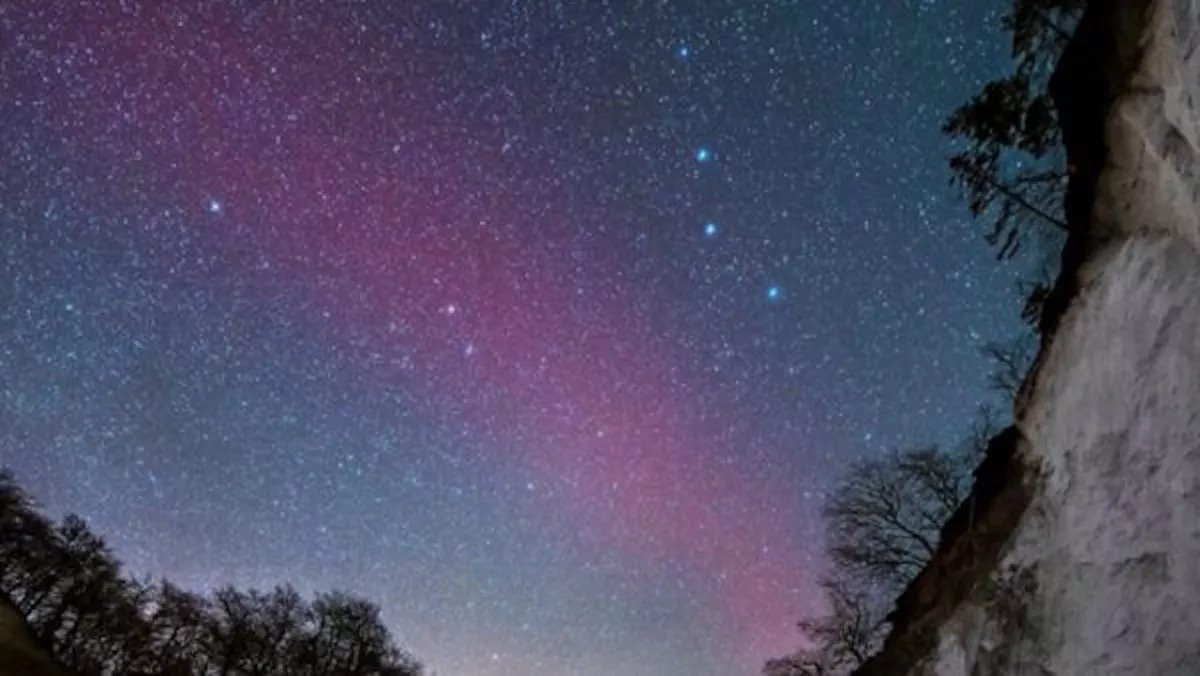An amazing and rare phenomenon was observed over the Scandinavian countries on the night of March 23. It is called a stable auroral red arc and occurs when an electric current heats up oxygen molecules.

Red Arc over Northern Europe
On the night of March 23, a rare phenomenon could be observed over the countries of the Scandinavian Peninsula – an arc of red light. It stretched across the sky in the direction from south to north and was like a frozen river.
It was at this time that one of the strongest magnetic storms in the last six years was observed on Earth, caused by a coronal mass ejection. A giant piece broke away from the Sun and flew towards the Earth. As a result, the skies at the poles of our planet were decorated with grandiose auroras.
However, it so happened that at the same time another, much rarer phenomenon was observed — a stable auroral red arc (SAR). It was especially bright over Denmark. So, one of the photographers was able to photograph it over the limestone cliffs of Møns Klint Island of Møn.
What is SAR
Auroras occur when charged particles of the solar wind from the flares are directed by the lines of force of the Earth’s magnetic field and excite molecules in the upper atmosphere. In contrast, SAR occurs much lower and is associated with the illumination of oxygen molecules that heat up the ring electric current.
Why only oxygen molecules begin to glow from the current is not known for certain. However, this explains why the light has a red tint. Scientists are sure that this phenomenon happens all the time. Directly during geomagnetic storms, the Earth’s field is strained so much that it becomes noticeable in the night sky.
In addition to SAR, another phenomenon is observed in the earth’s atmosphere during strong magnetic storms – STEVE. It looks like a ribbon of colored light. There is some evidence that the arcs of STEVE and SAR are related phenomena. In March 2015, observers in New Zealand watched as a bright red SAR slowly transformed into a STEVE event over the course of about half an hour.
According to www.space.com
Follow us on Twitter to get the most interesting space news in time
https://twitter.com/ust_magazine
